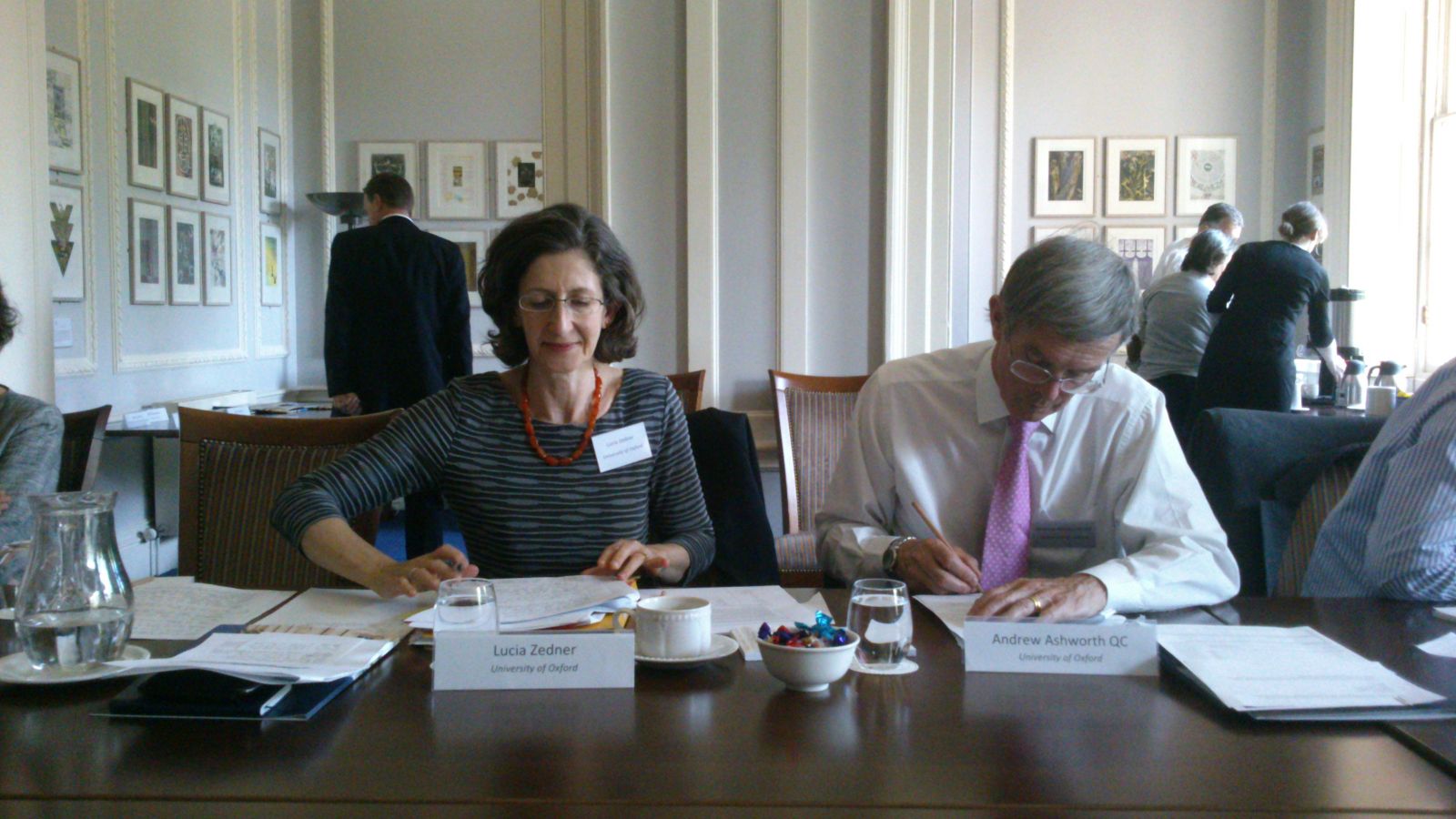Lucia Zedner, Andrew Ashworth, Ambrose Lee were funded by the Arts and Humanities Research Council, from August 2010 to July 2013.

The main objective of the project was to develop an account of the principles and values that should guide and limit the state’s use of preventive techniques that involve coercion. Although the rationales for and justifications of state punishment have been explored extensively, the scope, limits and principles of preventive justice have attracted little doctrinal or conceptual analysis, save in respect of measures to prevent terrorism. The project’s aim was to make good this deficiency, and, in addition to several articles, two major publications have flowed from it. The first is a book of essays: Andrew Ashworth, Lucia Zedner and Patrick Tomlin (eds), Prevention and the Limits of the Criminal Law (OUP, 2013). The chapters, written by international scholars, are based on papers read at two of our workshops and are preceded by an introduction by the three editors. The second major publication is a monograph by the project’s directors: Andrew Ashworth and Lucia Zedner, Preventive Justice (OUP, 2014).

There are good reasons to justify the state in authorizing the use of coercion to protect the public from harm. However, the central paradox is that although there is a tendency to advance preventive justifications for such measures in the name of security, these very measures tend to undermine individual liberty or to call into question a much older conception of security - the security of the individual from the state. It is one thing to assume that the state has a duty to protect people within its borders, but it is another thing to join Blackstone in claiming that ‘preventive justice is, upon every principle of reason, of humanity, and of sound policy, preferable in all respects to punishing justice.’ In its many guises preventive justice involves calculations of risk and the taking of measures against people before they have done any harm, lest they should do harm.
In their monograph Preventive Justice (OUP, 2014) Ashworth and Zedner describe the range of coercive preventive measures taken by the state and explore the restrictions on and deprivations of liberty that they entail. By elaborating the procedural safeguards, principled limits, and provisions for scrutiny, oversight and review that should apply, the book sets out to establish a framework for 'Preventive Justice' that is intended both as a guide and a stimulus to further debate.

